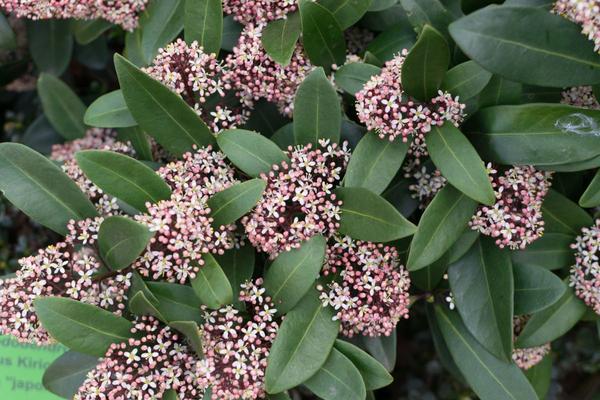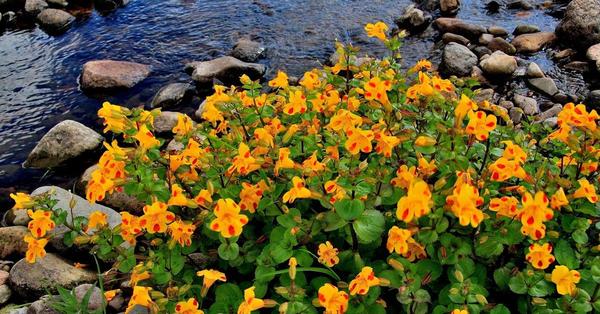
What plants are suitable for various problematic areas of gardens
show 21 photos
Do you have a dark corner in the garden, a part of the garden with waterlogged soil, a dry habitat where the sun roasts from morning to evening, a freezing basin or a place exposed to the winds? We will introduce you to plants that are suitable for these habitats.
However problematic places in the gardens are never destined for our resignation when it comes to growing plants. However, it is enough to just think about where we can find plants everywhere in nature, and I now mean our nature, the domestic, nature of the temperate climate zone of Central Europe. Plants can be found literally everywhere, one trying to push the light of the world over the other, some thrive in the dark, others in the swamps, on the rocks and in the sand, some in the water, some withstand the harshest winds, frosts and floods. Plants are simply immortal, but each one fits differently. In addition, we have another crutch here, that we will create a flower bed anywhere. And literally. And then it only depends on the selection of suitable plant species.
We simply have to always adapt the choice of plants to the place, not the other way around, so it doesn't work and if, then only to a limited extent. Plant a peach in the freezing basin and you have a problem, plant plants that still need moist soil, where they need to be watered all the time, and you can train for the Olympics with drips. Simply adapting the plant selection to the habitat will cost us less money, time and effort. The trial-and-error method is always more expensive.
Sagebrush (Photo: Shutterstock) Cinquefoil (Photo: Shutterstock)Conversely, it can be said that the problem areas in the gardens, in any direction, are actually a challenge and an opportunity to make the garden special, and not just plants. Do you have a waterlogged corner in the garden? Build at least a small garden pond here and plant mud plants around it, and water plants in the pond. And suddenly there is something wonderful in the world that the garden lacked, that will greatly improve the microclimate here, that will simply "lift" the garden, elevate it, improve it. Become a rock gardener! You will see the beauties you will experience thanks to the stones, clay, sand and stone mulch. Then you can only be educated in various types of quarries, nettles and other popular rock gardens.
When choosing plants, it is always a matter of their adaptation to specific conditions, requirements for cultivation and origin in natural conditions. We will then obtain quality seedlings from an experienced and honest gardener who will not sell you plants in poor condition, infested or otherwise damaged.
Debt (Photo: Shutterstock) Breast, goddess in the background (Photo: Shutterstock)

Plants suitable for places exposed to the wind
Wherever the wind has no natural or artificial obstacles, it does more damage. Quite naturally. Of course, we do not mean strong storms and local typhoons, which also occur in our country, but common stronger winds. The biggest problem with these winds is the ability to take water from the plants and the soil, to dry the plants. And it is the plant species that are adapted to such an environment that have very small leaves or, conversely, larger, but leathery, waxy or richly provided trychomy. In addition, such a habitat can be protected by a hedge that has a compact shape, is dense and has lower water requirements. Such a hedge will alleviate the effects of the wind.
Purgatory (Photo: Shutterstock) Wrinkled Rose (Photo: Shutterstock)Many mountain plant species are suitable for wind farms, such as mountain cornflower (Centaurea montana), heather and heather, various sage (Salvia), barberry (Berberis), catfish (Eryngium), whitethorn (Echinops), debris (Heuchera), Stachys byzantina), shanti (Nepeta), yarrow (Achillea), yarrow (Anthemis), wormwood (Artemisia), cinchona (Potentilla fruticosa) and wrinkled rose (Rosa rugosa).
Ornamental sage (Photo: Shutterstock) Shanta (Photo: Shutterstock)Plants for waterlogged habitats, edges and surroundings of lakes, swampy environment
Waterlogged places of gardens and parts of gardens adjacent to the swamp or wetland, which penetrate just into the garden. We still hear everywhere that the biggest problem of our landscape in terms of water retention was the reclamation and liquidation of swamps and wetlands, flooded parts of rivers. So know that if you have such a place in the garden, it is a huge advantage not only for nature, but also for you. On the contrary, drainage and drainage are not desirable at all, but the use of a waterlogged habitat for growing unusual plant species that would not be possible elsewhere.
Tužebník (Photo: Shutterstock) Čechrava (Photo: Shutterstock)This is usually a habitat with a high groundwater column and places where the soil leaks poorly and slowly. We must realize that it is the shallower edges of the water that offer similar conditions. In addition, waterlogged places are full of animal life, we all need water. Whether it's species that need water to live or just need a drink. Of course, there is also a solution with drainage or, conversely, the construction of an elevated flowerbed, or poorly permeable soil can be lightened, for example, gravel, sand and organic material, which supplies nutrients, but why not use the wetland just for growing plants to suit it?
Suitable for waterlogged habitats are, for example, marsh buttercup (Caltha palustris), irises (Iris), mint (Mentha aquatica), forget-me-not (Myosotis palustris), Filipendula, Lythrum salicaria, Menyan trifles , sedge (Carex elata), sedge (Astilbe), upolin (Trollius), willow (Lysimachia punctata), jug (Mimulus), ash (Ligularia) or rodgersia (Rodgersia).
Marsh buttercup (Photo: Shutterstock) MintPlants for arid habitats in direct sunlight
Not only low moisture requirements are essential for these plants, but also the ability to withstand full sun. However, it is the sunny habitats that prefer such a huge number of plants that it is enough to exclude from their list those that have lower demands on watering. For example, light sandy soils will not be able to retain enough moisture in the summer, so it is necessary to select for such habitats "wrecks" with fleshy fat leaves holding a lot of water supply, hairy plants, species with long and deep roots. It is also necessary to take into account that these soils are also poor in nutrients, so they require the incorporation of organic matter and mulching is also suitable, which reduces the evaporation of water from the soil.
Prickly Pear (Photo: Shutterstock) Divizna (Photo: Shutterstock)Yucca, Agastache, Linum, Verbascum, Artichoke, Lavender, Papaver, Helianthemum, Helianthemum are suitable for arid and sunny habitats. Origanum), prickly pear (Opuntia), myrtle spurge (Euphorbia myrsinites), crown prickly pear (Lychnis coronaria), stonecrop (Hylotelephium) and others.
Lavender (Photo: Shutterstock) Stonecrop (Photo: Shutterstock)Plants for darker and colder corners
Shade, cold and damp, that's probably the biggest challenge. Even grass matter does not grow in such habitats and mosses predominate, which gradually displace it. Therefore, we basically choose plant species that come from the shady, darker habitats of our forests. Usually, these species need sufficiently moist soil and then light and heat. Then, if you plant a variegated cultivar of such a species in such a place, expect that the variegation will gradually disappear, the cultivar will simply turn green again. And also with the flowering of these plants it will probably not be famous, although even in this case it depends on the species. Of course, we can bring more light to such a place, for example by painting the wall white, cutting through a shading tree or shrubs, etc.
Skimie (Photo: Shutterstock) Brslen (Photo: Shutterstock)Plants suitable for darker and colder corners include, for example, goddesses (Hosta), ferns, lily of the valley (Convallaria majalis), eagles (Aquilegia), lungworts (Pulmonaria), bergenia (Bergenia), primroses (Primula), snowdrops (Galanthus), smokestacks (Corydalis), Helleborus, Meconopsis, Dactylorhiza, Skimmia, Euonymus, etc.
Goddess (Photo: Shutterstock) Lily of the valley (Photo: Shutterstock)






